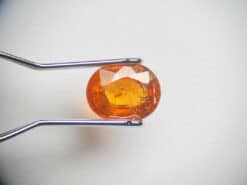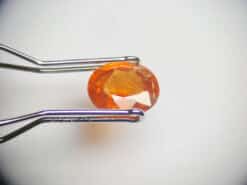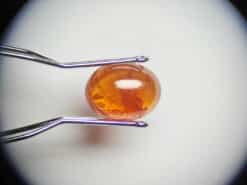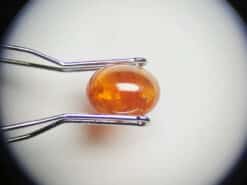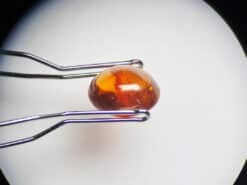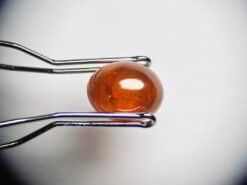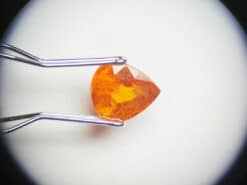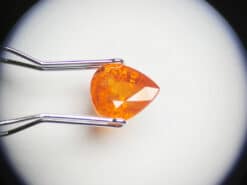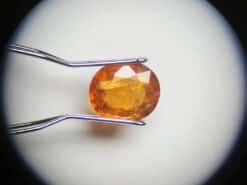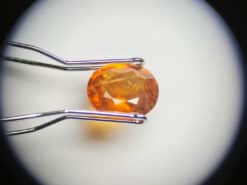Spessartine
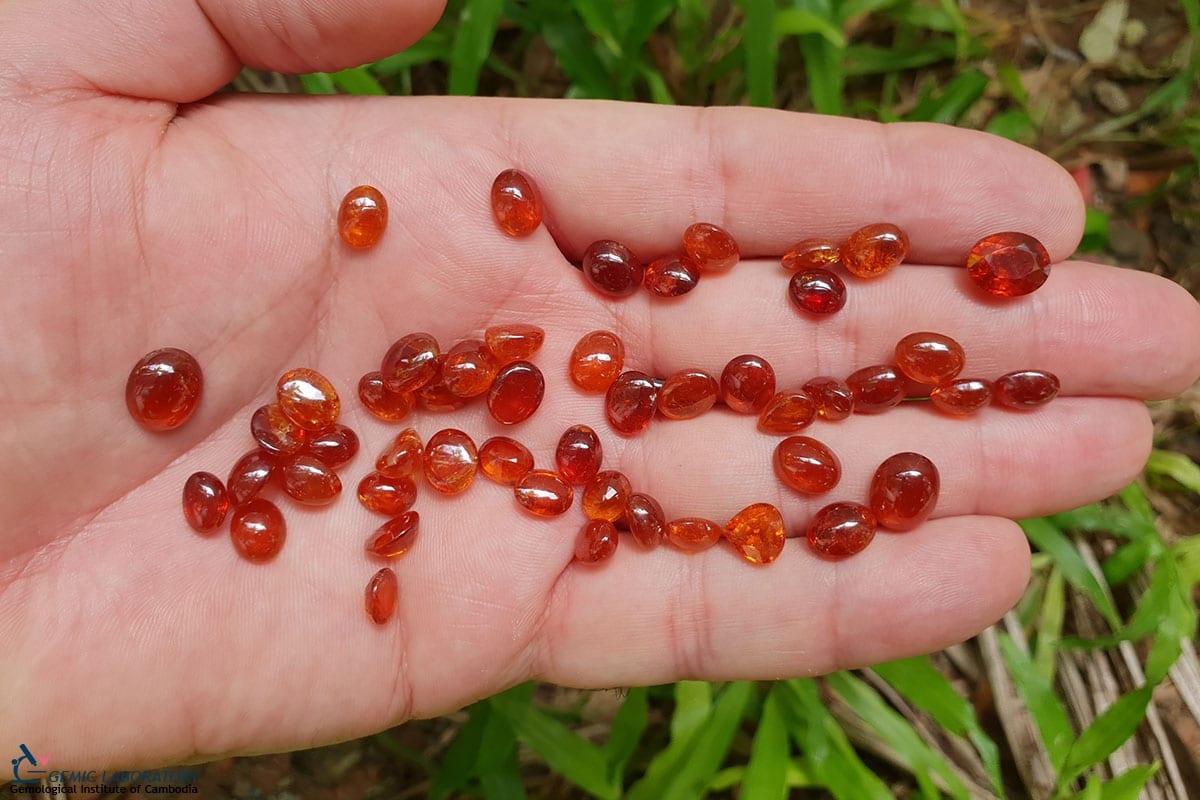
Spessartine or spessartite orange garnet meaning.
Buy natural spessartine in our shop
Spessartine garnet meaning
Sometimes mistakenly referred to as spessartite. It is a nesosilicate, manganese aluminum garnet species, Mn2+3Al2(SiO4)3. This mineral should not be confused with a type of igneous rock. A lamprophyre, called spessartite.
Spessartine’s name is a derivative of Spessart in Bavaria, Germany. The type locality of the mineral. It occurs most often in granite pegmatite and also allied rock types. And in certain low grade metamorphic phyllites.
Sources include Australia, also Myanmar, India, Afghanistan, Israel, Madagascar, Tanzania and the United States. Orange yellow is mandarin garnet. It comes from Madagascar. Violet red color sources of rhyolites cames from Colorado and Maine, USA.
In Madagascar, spessartines are exploited either in their bedrock or in alluvium. The orange garnets result from sodium rich pegmatites. it s found in bedrock in the highlands in the Sahatany valley. We found generally in alluvium, in southern Madagascar or also in the Maevatanana region.
Spessartine forms a solid solution series with the garnet species almandine. Well-formed crystals from this series. Varying in color from very dark red to bright yellow orange.
Were found in Latinka, Rhodope Mountains, Kardzhali Province, Bulgaria. Like the other garnets, it always occurs as a blend with other species. Gems with high spessartine content tend toward a light orange hue. While almandine prevalence induces red or brownish hues.
Garnet
Garnets are a group of silicate minerals. We use it since the Bronze Age as gemstones and abrasives.
All species of garnets possess similar physical properties and crystal forms. But it differs in chemical composition.
There are two such series within the garnet group: the pyralspite series and the ugrandite series. In the pyralspite series the A site can exhibit complete isomorphous replacement between Mg, Fe and Mn.
Whereas in the ugrandite series the B site exhibits complete isomorphous replacement between uvarovite and andradite but only limited solid solution between these and grossular. This arises because the ionic radii of Cr3 and Fe3 are similar and are significantly larger than that of Al3.
Garnet species are found in many colors including red, also orange, yellow, green, purple, brown, blue, black, pink, and colorless, with reddish shades most common.
Because the chemical composition of garnet varies, the atomic bonds in some species are stronger than in others. As a result, this mineral group shows a range of hardness about 6.5 to 7.5.
Spessartine or spessartite garnet meaning and healing properties benefits
Spessartine garnet has a strong stimulating vibration that is powerful to boost how you feel. These crystals have metaphysical properties that are known to assist manifestation and aid creativity. They also stimulate the brain, strengthening logical reasoning, mental clarity and activating imaginative thinking.
FAQ
Is orange spessartite garnet rare?
A bright orange mandarin spessartite garnet is extremely rare. It is in fact the rarest and, often, most expensive of the spessartite family.
Are garnets valuable?
Prices range from $500 a carat for good colors with some inclusions, to $2,000 to $7,000 for clean larger stones with top color. Demantoid garnet is the rarest and most valuable of the garnets and is one of the rarest of all colored gemstones. It is remarkable for its brilliance and fire.
How much is orange garnet worth?
Prices on spessartite garnet vary according to quality and size. The main quality factors are color and clarity. The saturated pure orange is the rarest and most valuable, with prices ranging from $1,000 to $2,000 per carat depending on size.
Natural spessartine for sale in our gem shop
We make custom made spessartine jewelry as engagement rings, necklaces, stud earrings, bracelets, pendants… Please contact us for a quote.



